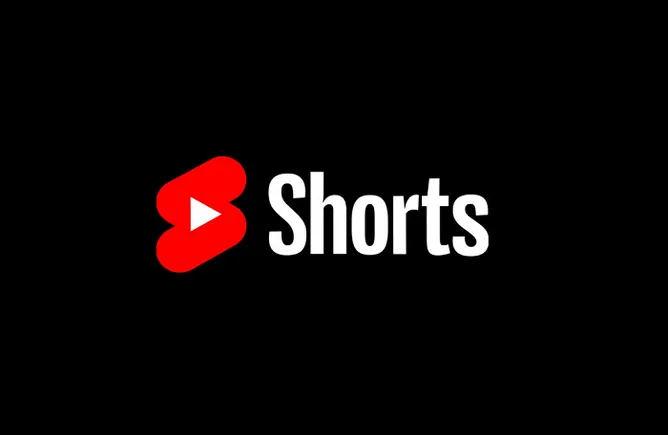In part 1 of this three-part series, the authors explain why leaders must give the best of their talent attractive new options. In part 2, they offered five questions to help. Part 3 follows below.
In the early aughts, the Oakland A’s turned the talent scouting industry on its head with the introduction of Sabermetrics: a way of evaluating baseball players based on data rather than scouts’ impressions. The Moneyball approach saw an underdog team scream to prominence in the 2002 season despite a minuscule budget for talent.
Every team in the league now uses a data-based strategy focused on discovering overlooked talent and maximizing player impact via the so-called three true outcomes: home runs, walks, and strikeouts. The rest, Moneyball fanatics will explain, is less material to a team’s performance over a season.
We see a similarly monumental paradigm shift on the horizon for organizations as the war for talent rages on while disruptions of every kind shake our foundations. Corporations may want to be “flatter” and move on from the era of hierarchical power and they may want to recognize “network leaders” and the value they create, but the systems that corporations use to evaluate and optimize talent fundamentally miss how to locate and empower star players. The fourth annual AlixPartners Disruption Index found that 98% of firms acknowledge the need to shift their business models but feel deep uncertainty and insecurity over how to do so. This figure had increased from 94% in 2022.
Value in a disrupted world
In a disrupted world, if the CEO doesn’t understand that strategy-impacting value can occur anywhere, even at the entry-level bands of an organization, they will seriously limit and perhaps endanger the organization’s success. Even the attuned CEO may be insulated from valuable talent by multiple levels of senior leadership and additional levels of middle management.
If you think that might be you, then your company is missing or even burying potential value in many pockets of the organization—and missing the opportunity to invest in and reward the very individuals, teams, and networks that have been the primary reasons for the organization’s success. That missed opportunity is especially true for (1) talent that report to middle managers and (2) specialists whose performance and impact may be hidden and eclipsed when others are in positions to represent and summarize their achievements.
The well-worn “nine-box” approach to talent management was not designed to serve the nonhierarchical, impact-driven organization of the future. In fact, the usual process for nine-box and other standard talent-review processes depends on senior leaders’ representing the views of middle managers, and it rarely uncovers the actual value creators who are typically further down in a hierarchy.
From annual evaluations to recruitment processes, many organizations seek to become flatter and more dynamic, distributing leadership to every level while simultaneously not knowing how to locate and empower star players. They don’t even know what the root causes of success for their strategy are, much less the business equivalent of Sabermetric criteria for value creation and high performance.
We need to change how we scout and how we score. We need to change the game itself.
Barriers to change
Successful corporate leaders in the next era will see their roles primarily as impact hunters, and they will be empowered to compensate high-impact and high-impact-potential talent accordingly regardless of the talent’s level in the organization or their job grades. But getting there will mean moving past a host of obstacles, including:
• Barriers to seeing into all levels of the organization
• Legacy recruiting that focuses on résumés, seniority, and so-called career tracks that don’t allow for skill-based or impact-based hiring and compensation
• Fear that the new paradigm might threaten the job security of managers
• Resistance to compensation models that don’t perform according to traditional hierarchical bands
• Difficulty in getting buy-in from the board in order to identify value creation and layers below senior tiers
• The common problem of determining where the most value gets created and where a strategy has its most impact
• A disconnect between the talent strategy and the overall company growth strategy
On the last point, 24% of private equity firms surveyed say they don’t have the right leaders in place (and 22% are not sure), but all recognize the need to be able to generate “strategic ideas, smart initiatives, and strong execution” in the current macroenvironment.
We know that talent is already thinking in terms of impact. The rise of the remote and gig-work revolution has helped shatter rigid hierarchies and move workers to a skill-based mindset. Talent are skeptical of noncompete clauses and punching-the-clock-induced burnout and cognizant of the productive power of their early and midcareer years. They also know they can increase their compensation by moving between companies. Gen Z are refining those and other priorities into a generation-defining playbook. Last, we are seeing a generational shift toward network leadership and having impacts in often relatively leaderless ecosystems.
In discussions of barriers and examination of why Sabermetrics hasn’t taken hold in the boardroom yet, business leaders should realize the importance of recognizing that the protection of compensation bands directly tied to hierarchy can be vehement. It can be conscious as well as unconscious. And it may take a generation to really change the game.
We don’t have a generation to wait, however; we’re looking for ways to accelerate the change.
Moving to an impact model
So, where do leaders begin, once they’ve understood the scale of the change they have to lead? Perhaps they’ve already shifted to a true focus on building a dream team over a pursuit of the one-great-person theory of leadership. And that’s a great start. But the next phase will require some introspective work. As they look at true pursuit of an impact-based talent strategy, CEOs need to ask themselves:
• What do you really know about the rest of the company? Write down the names of the people you know below the top three levels of the organization: What do you really know about their work, their value creation, their impacts, and their potential to offer more?
• What is blocking or even eclipsing your view of the impact players, teams, and networks in your organization? How could you improve your views of talent and impacts?
• Are you aware that the future of the business is best known by people outside your orbit? Does this worry you? How much more secure about your organization and your role would you be if the company distributed leadership to all levels of the organization? if the company’s structure were a constellation of impact that you could invest in? and if the company had players who were writing much of the strategy for you?
• Do you know how to find the centers of resistance—and the centers of support—for building an impact-focused culture and rewards system? How can you best strengthen the support for—and eliminate the resistance to—such a change?
• Are you paying the highest-impact players on your team what they deserve? Are mid-impact or even low-impact players at the senior level getting most of the rewards for the work of others?
Until now, companies have relied on manager-reported metrics for talent. Rather than labeling employees as “workhorses” or “core players” according to their performance and potential, baseball’s three true outcomes speak to a mindset that asks: What impact could a player have if the company unlocked the player’s full potential? What essential contributions, collaborations, relationships, creative advancements, and problem-solving breakthroughs might the player offer that our current model doesn’t even see, much less invest in and maximize?
The free-agent talent revolution has happened. The talent at lower and middle levels of your organization are already thinking in terms of impact—and the CEO had better catch up.
The post Why CEOs Need To Write A New Contract With Top Talent: Part Three appeared first on ChiefExecutive.net.
























































![Social Media Spring Cleaning [Infographic] Social Media Spring Cleaning [Infographic]](https://imgproxy.divecdn.com/9e7sW3TubFHM00yvXe5zvvbhAVriJiGqS8xmVFLPC6s/g:ce/rs:fit:770:435/Z3M6Ly9kaXZlc2l0ZS1zdG9yYWdlL2RpdmVpbWFnZS9zb2NpYWxfc3ByaW5nX2NsZWFuaW5nMi5wbmc=.webp)
![5 Ways to Improve Your LinkedIn Marketing Efforts in 2025 [Infographic] 5 Ways to Improve Your LinkedIn Marketing Efforts in 2025 [Infographic]](https://imgproxy.divecdn.com/Hv-m77iIkXSAtB3IEwA3XAuouMwkZApIeDGDnLy5Yhs/g:ce/rs:fit:770:435/Z3M6Ly9kaXZlc2l0ZS1zdG9yYWdlL2RpdmVpbWFnZS9saW5rZWRpbl9zdHJhdGVneV9pbmZvMi5wbmc=.webp)











